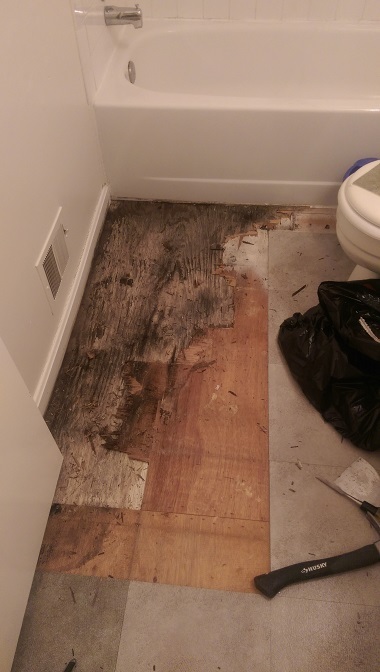This article down below involving How to Prevent Bathroom Water Damage is especially captivating. Give it a go and draw your own personal final thoughts.

The shower room is extremely at risk for moist build-up and also potential water damages due to the regular use of water in it. This short article offers simple evaluation methods to assist finding water damages threats.
The frequent use water in the restroom makes it extremely vulnerable for moist build-up as well as prospective water damages. By evaluating it regularly, you can decrease water associated damages.
The complying with collection of evaluations is very easy to perform as well as need to be done as soon as in every 3 months in order to keep your bathroom in good shape and also to avoid possible water damages triggered by the tub, the shower, pipe joints as well as plumbing, sinks, cabinets, as well as the toilet
Do not neglect doing these evaluations and be complete while doing them. Remember that these easy examinations can save you a great deal of money by offering early indicators for water damage
Sinks and also Cabinets
Sinks as well as cabinets are revealed to wetness and moisture daily and also are typically overlooked. Check routinely under the sink as well as on the countertop over it. Fix any type of drip in the trap as it might suggest drain troubles. Browse the sink, sluggish draining pipes might indicate an obstructed drain. Replace sink seals if they are fractured or loosened.
Tub and Shower
The shower as well as bathtub call for unique interest and upkeep. Examine the ceramic tiles as well as replace if fractured. See to it that there is no missing cement in between the tiles. Inspect and also replace cracked caulking at joints where the wall surfaces fulfill the flooring or the tub. Clogged drains pipes and pipelines troubles will certainly avoid the bathtub from drying out and also may indicate serious troubles under the tub. Speak with a professional quickly to avoid structural damages. Focus on discolorations or soft locations around the tub walls as they may indicate an inner leak.
Plumbing
Signs for water damages are tough to find because many pipes are mounted inside the wall surfaces.
Pay special attention to floor covering as well as wall surfaces dampness as well as stains as they might suggest an undetectable plumbing problem. Check dampness degrees in adjoining rooms as well.
The Toilet
The commode is an at risk water joint. Inspect the water lines and search for leakages around the bathroom seat, in the hose pipe, and under the water container. If you identify any type of indications of moisture on the flooring around the bathroom, check for leaks in the toilet edge as well as container seals.
Understand that hanging toilet dish antiperspirants enhances the chances for obstructions.
TIPS TO PREVENT WATER DAMAGE IN THE BATHROOM
The average household uses approximately 80-100 gallons of water per person per day. For a family of 4, that's almost 2,500 gallons of water a week! The largest portion of this consumption comes from bathroom use. Flushing the toilet uses the most water, followed by taking a shower or bath. With that much water running through the home, water damage in the bathroom is bound to happen. Knowing how to spot signs of a water leak is essential to preventing long-term damage. This guide provides you with tips to reduce the impact of water damage on your bathroom.
CAUSES OF BATHROOM WATER DAMAGE
Pipe breaks are the most common cause of water damage we see in our daily jobs. The age of a pipe plays a large role in a pipe break as well as corrosion. Over time, the metal begins to break down, allowing water to escape. Frozen pipe breaks are also a concern in the winter months. Toilet overflows caused by paper products or children flushing inappropriate items. Degraded caulking around the toilet or bathtub can allow water seepage, sometimes behind the fixture, into the subfloor or walls. Condensation forms when the water in a pipe is cooler than the air temperature. Beads of water form on the exterior of the pipes, sometimes so much so that the water begins to drip and pool below. Sink or shower backups created by poor drainage. HOW TO PREVENT WATER DAMAGE IN YOUR BATHROOM
Inspect your toilet supply line for worn or frayed hoses and replace them as needed. Winterize your plumbing to prevent a frozen pipe break. Use vent fans to prevent condensation that can lead to mold growth. Routinely check and replace degraded caulking around your toilet or bathtub. Increase the temperature in your toilet tank and insulate your pipes during the warm summer months to keep condensation from forming. Use child safety locks on the toilets. Flush only toilet paper. "Flushable" wet wipes are actually not good for your plumbing system. Additionally, feminine hygiene products should not be flushed. Prevent water from escaping the tub or shower. Make sure shower curtains are in good condition. Inspect shower doors and replace the seal strip if necessary. Wipe up any water that accumulates on the floor and use bath mats. Water left to sit can cause damage to the tiles and flooring. Refrain from using bath products containing heavy oils to avoid a clogged drain.

As a passionate person who reads on How to Repair and Prevent Bathroom Water Damage, I imagined sharing that piece of content was worthwhile. Enjoyed our post? Please share it. Let somebody else find it. Thanks a bunch for your time. Visit again soon.
Give Me A Quote!